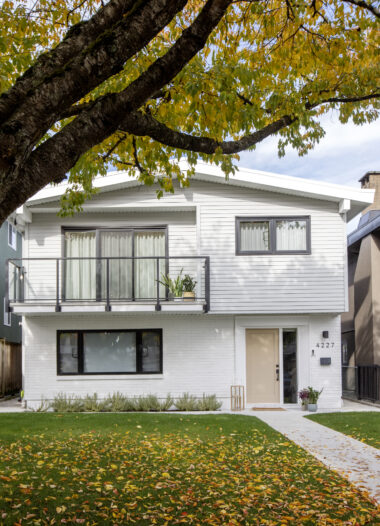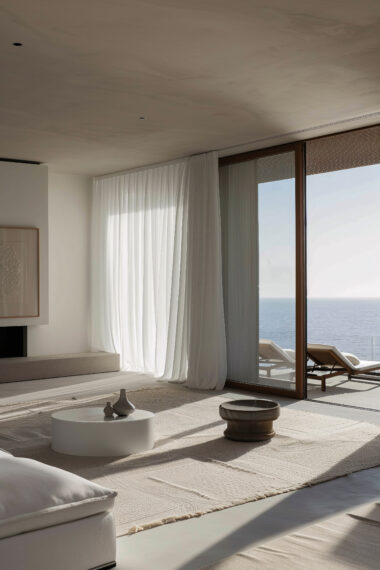Interior design has always been an integral part of the real estate industry, shaping the way spaces are used, perceived, and valued. Over the years, trends in design have evolved dramatically, influenced by cultural shifts, technological advancements, and changing lifestyles. Today, interior design in real estate is not just about aesthetics; it’s about creating functional, sustainable, and emotionally resonant spaces that meet the needs of modern living. Here’s a look at how interior design has evolved in modern real estate.
1. The Rise of Open-Concept Layouts
Once, homes were divided into smaller, more traditional rooms, each with its own distinct function. However, as modern lifestyles shifted towards more open and communal living, interior design embraced open-concept layouts. This trend started in the mid-20th century and has continued to dominate residential and commercial spaces. The goal? To create more fluid, interconnected spaces that encourage interaction and maximize natural light. Open-concept designs allow for flexible living spaces, blending kitchens, dining areas, and living rooms into a seamless whole. This design shift reflects the increasing desire for multi-functional spaces that adapt to the diverse needs of today’s homeowners.
2. Sustainability and Eco-Friendly Design
Sustainability has become a major influence on interior design, with homeowners and real estate developers alike recognizing the value of eco-friendly materials and energy-efficient solutions. From energy-saving appliances and water-efficient fixtures to sustainable flooring and insulation, eco-conscious design choices are now a key consideration in the building and renovation process. Today’s modern real estate designs increasingly feature sustainable elements, such as reclaimed wood, bamboo, and energy-efficient windows, all of which contribute to reducing a home’s carbon footprint. Buyers are more conscious than ever about the environmental impact of their homes, making sustainable interior design a priority.
3. Technology Integration
Smart homes have taken interior design to a whole new level. With the advent of smart technology, interior spaces are being designed to accommodate advanced home automation systems, from lighting and climate control to security and entertainment. The integration of technology in home design has enhanced convenience, comfort, and security for homeowners. Designers are now incorporating sleek, minimalist technology that seamlessly blends into the aesthetic of a space. Hidden charging stations, voice-controlled lighting, and automated curtains are just a few examples of how technology is shaping modern interiors.
4. Minimalism and Functional Aesthetics
Gone are the days of excessive ornamentation and cluttered spaces. The minimalist approach to interior design has taken center stage in modern real estate. Clean lines, neutral palettes, and functional furniture are the hallmarks of minimalist design. The focus is on simplicity, comfort, and creating an atmosphere of calm and tranquility. Minimalism has also influenced the way furniture is designed. Multi-purpose furniture, such as sofas that convert into beds or coffee tables with built-in storage, is increasingly popular as it maximizes space while maintaining a sleek aesthetic.
5. Personalization and Customization
While mass-produced furniture and décor were once the norm, today’s interior design is all about personalization. Homebuyers are increasingly seeking spaces that reflect their individual tastes, values, and lifestyles. Custom-built furniture, personalized color schemes, and tailored layouts are now common features in modern homes. Designers and builders are working closely with homeowners to create spaces that feel truly unique, whether through custom cabinetry, bespoke lighting fixtures, or artful wall treatments. This shift toward personalization allows for a deeper emotional connection to the home, transforming it into a sanctuary that aligns with the owner’s identity.
6. Wellness-Centric Spaces
As the focus on health and well-being grows, interior design is following suit. The concept of wellness design emphasizes creating spaces that promote physical, mental, and emotional well-being. Features like natural light, biophilic design (bringing nature indoors), and spaces for relaxation and mindfulness are becoming more prominent in modern homes. Designers are also considering factors like air quality, acoustics, and ergonomics when creating spaces, understanding that these elements directly impact the health of the inhabitants. The integration of wellness features into interior design not only enhances quality of life but also adds long-term value to properties.
7. The Revival of Timeless Styles
While modern design trends continue to evolve, there’s a growing appreciation for timeless interior styles that transcend passing fads. Many homeowners and designers are embracing classic design principles—such as mid-century modern, Art Deco, or traditional elements—and incorporating them into contemporary spaces. This blend of old and new has given rise to hybrid designs that reflect both modern functionality and historical elegance. By combining timeless styles with modern elements, designers can create spaces that feel both fresh and familiar.
Conclusion
The evolution of interior design in modern real estate reflects broader cultural shifts, technological advancements, and changing consumer preferences. Today’s interiors are not only visually appealing but also functional, sustainable, and health-conscious. As these trends continue to shape the real estate market, both buyers and designers will continue to prioritize creating spaces that are not just stylish, but meaningful and adaptable to the needs of modern living.




